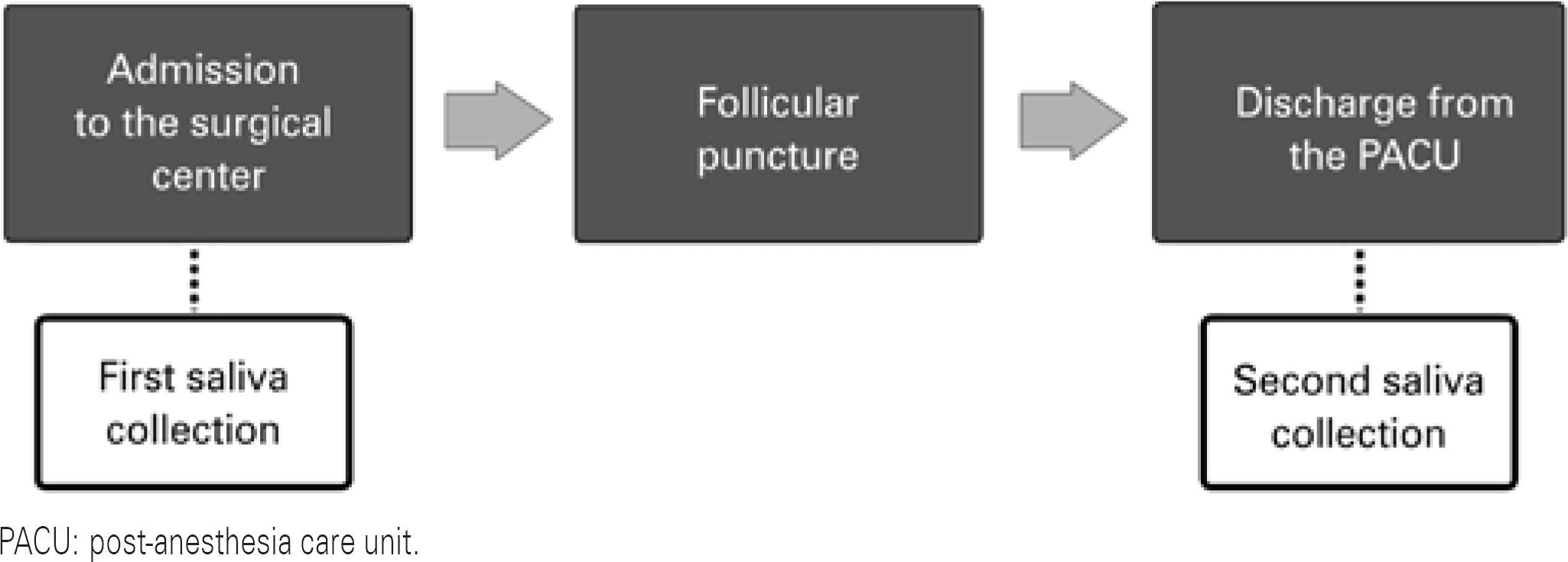ABSTRACT
Objective:
To compare the anesthetic techniques using propofol and fentanyl versus midazolam and remifentanil associated with a paracervical block with lidocaine in performing ultrasound-guided transvaginal oocyte aspiration.
Methods:
A randomized double-blind clinical trial (#RBR-8kqqxh) performed in 61 women submitted to assisted reproductive treatment. The patients were divided into two groups: anesthetic induction with 1mcg/kg of fentanyl associated with 1.5mg/kg of propofol (FP Group, n=32), in comparison with anesthetic induction using 0.075mg/kg of midazolam associated with 0.25mcg/kg/min of remifentanil, and paracervical block with 3mL of 2% lidocaine (MRPB Group, n=29). Main outcome measures: human reproduction outcomes, modified Aldrete-Kroulik index, hemodynamic parameters, and salivary cortisol.
Results:
The results revealed a higher number of embryos formed in the FP Group (p50=2 versus 1; p=0.025), gestation rate two times higher in the FP Group (44.4% versus 22.2%; p=0.127), less time to reach AK=10 in the MRPB Group (p50=10 versus 2; p<0.001), and lower mean of hemodynamic parameters in the MRPB Group (p<0.05).
Conclusion:
Anesthesia with fentanyl and propofol as well as with midazolam, remifentanil, and paracervical block offered satisfactory anesthetic conditions when performing assisted reproduction procedures, providing comfort for the patient and physician.
Keywords:
Anesthesia; Reproductive techniques; Fentanyl; Propofol; Midazolam

